As everyone on Drivetibe, I am a car addict and as a major part of this community, I am also fascinated by scale models of real cars and that explains my full article over diecast collecting, an article that I wrote a couple of years ago and appeared on the highlights on Drivetribe once again for my total surprise, what made by happy and hyped over it.
And as a collector, when my birthday arrived, I did something that would be pretty much expected… I went out to a store to buy a new scale model for my collection, a present from myself to myself. And wow… that wasn't an easy task! Even though I knew “the person” I was buying it for (myself), that store had so many great models in so many scales and price ranges that I couldn't just pick something, pay for it and leave In a matter of minutes, I had to look everything and think about what I would take and at that moment, there was one thing I was sure: I wasn't going to leave that store empty-handed!
So, after probably… (at least) half an hour, I finally made my choice and I can't think that I couldn't make it any better. The bright yellow Porsche Carrera GT was one of the models that caught my attention right away and everything about it was great. The high level of detail, expected from a brand like Minichamps (another positive point for that model) and the price (€ 41, 90 for those wondering)… it was a great cost-benefit on a scaled model of one of my all-time favourite supercars. Not forgetting the fact that it is a 1/43 scale model, one of my favourites as is it on this scale that you can have both a model small enough to find a place for it at your table or shelf without taking that much space, but big enough to have a pretty good level of detailing on those tiny parts, especially in a model made by such a brand like Minichamps. Here, we can see things like the different colours on the wheel nuts on each side (a peculiar and small detail present on the Carrera GT, reminiscent from its racing background), the net over the engine cover, the Porsche branding on the brake callipers… and here I'm just talking about exterior details. The interior is as well detailed as the exterior and it's always interesting to look at.
Now, it's worth mentioning that in that article, I've mentioned a few tips over diecast collecting and one of them is something that, at least for me, it's a crucial way to keep the hobby healthy and fun, the theme. My collection has high-performance vehicles and exotic cars in general, so both race cars and luxury cars fit into my collection and the car we're talking about fits perfectly into both line-ups.
And it wasn't all about the level of detailing and pricing over a scaled replica of a cool car, but about the car represented on those tiny details and the story behind it. I assume that I wouldn't really think about those points at that decisive moment, but as I was at home having a better look at it, some of those things came to mind and as I was thinking about them and through deeper searching based on what I already knew, I really saw how much history the Carrera GT carries, being it a 1/43 model or the expensive and powerful 1/1 model, so here's a list of topics that explain why at least for me, the Carrera GT has so much value and why it was the right choice and it is no wonder why I have five different scaled models from it at my collection right now, from Hotwheels 1/64 models to the 1/24 replica and the most recent 1/43 bright yellow Minichamps model.
The brand:
There's no doubt, Porsche holds a place as one of my all-time favourite car brands and it's not random. The legacy that Porsche carries on the industry from 356 onwards is enormous. There's a famous quote from Ferdinand Porsche that says “I couldn't find the sportscars of my dreams, so I built it myself” and that resonates with the Porsche brand nicely. Their cars have an upper level of quality that can be seen on every car they have built from 1948 onwards. The 911 is a rear-engined sports car, but it's minimally practical so it can be used for a daily commute in a way other sports cars can't and it has a variation to every client possible, from the 911 Carrera to the track-focused GT2 RS and the same can be said about the 718 series. Now, if we're talking about actual daily drivers, Porsche also has that covered with an SUV line based on the Macan and the Cayenne and an executive line up based on the Panamera and the brand new Taycan, Porsche's first EV on the market.
“I couldn't find the sports car of my dreams, so I built it myself”
Ferdinand Porsche
And that high level of quality also applies to motorsport, with Porsche being a record-holder on the legendary Le Mans 24 Hour race with a total of nineteen victories between 1970 and 2017. Cars like the 917K and the 935 during the '70s and the 919 Hybrid in the last decade turned Porsche into a real icon on the racetrack, but not only there… Porsche also attempted and won rally races like the famous Paris-Dakar in 1984 with a 911 and in 1986 with the 959, both of them with the duo René Metge/Dominique Lemoyne behind the wheel, notebooks and all the tools needed for that mission.
Now, returning to road cars, Porsche has a vast history in the industry as the german brand developed projects that went from tractors to supercars and successful race cars and they weren't all Porsche-badged vehicles. Porsche also sold their know-how, developing a number of projects for other brands between the '80s and '00s. Those partnerships resulted in cars like the Audi RS2 and the Opel Zafira… yes, the Zafira – and all of those partnerships had a reason, money.
photo credits: Porsche Museum
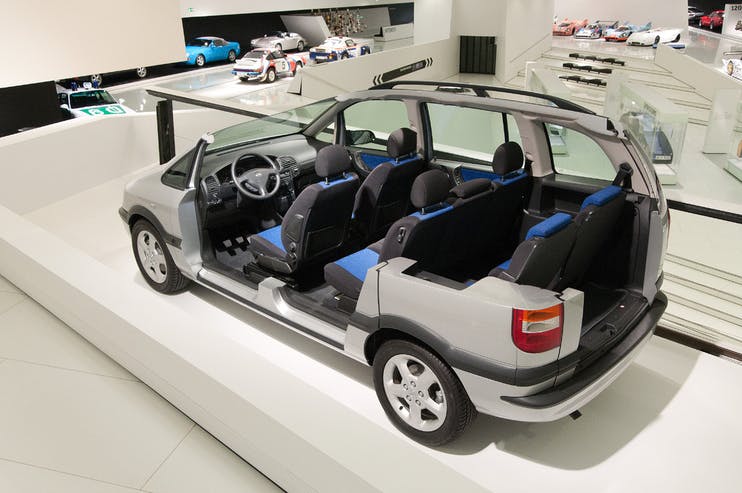
photo credits: Porsche Museum
Even though Porsche was since the start connected to Volkswagen and even though they were big in terms of branding, their sales weren't enough to keep the funds on a positive margin to keep the operation. There was a real fear of bankruptcy and avoiding that, Porsche entered into what was a new market for them in favour of a higher reach on the automotive market, a decision that wasn't as popular between the enthusiasts, but still necessary for their pockets. That project was the Cayenne and the release of a Porsche badged SUV was received with some critics coming from a number of Porsche hardcore fans, but it was that SUV that brought Porsche into a steady financial margin and it was that SUV that made the subject of our article possible.
The Cayenne was a good call, with a total of 12.921 units sold on the US market in 2003 and 12.269 in Europe during the same year, having slightly increased through the years that came after, having peaks of 18.117 units sold in the US during 2004 and 17.520 in Europe at the same year, followed by a number of 16.627 units sold in Europe during the year after, duplicating their sales on the brand in general, as they made more or less the same number of sales on the 911. It wasn't a blockbuster, but Porsche reached more customers and increased their sales. It could be controversial, but it was a great call to keep the brand alive and profitable and in the middle of all the Cayenne buzz, there was another project making history.
The 5.0 Litre V10
Photo credits: Porsche

Photo credits: Porsche
What stands today as a supercar icon, the Carrera GT came up unforeseen. The 5.0-litre V10 engine that currently belongs to Porsche's 2005 top-notch model is a direct descendant from the 3.5-litre V12 engine that Porsche developed for the Footwork F1 Team to be used through the 1991 season. It's worth saying that since Porsche's departure from the Formula 1 grid as the 1987 season ended, the german brand aimed to go back to the circus, once again as an engine manufacturer only, having rumours of a contract with the Onyx Grand Prix team before announcing their partnership with the rebranded Footwork for the early '90s, with a deal for a brand new V12 engine for the 1991 Formula 1 Championship.
The legendary Hans Mezger was the name behind the design of the 3.5 litre V12 that would give power to the cars driven by Alex Caffi and Michelle Alboreto, basing his project on the previous turbocharged V6 engines that powered Mclaren cars between 1983 and 1987, being indirectly the joint of two V6 engines together, but Porsche's problems with their project started even before the season opener at Phoenix for the US GP. The Porsche 3512 project was too bulky and heavy when compared with other teams engines and couldn't properly fit into Fotwork's car, which caused a delay on the project. In the meantime, the season started and Footwork had to take their outdated FA11 instead, the car they used during the seasons of 1989 and 1990 (when the team was still only called “Arrows”), but mounted with Porsche's V12 instead of the Ford-powered V8 engine that the team used before, but more problems came ahead.
The Porsche 3512 engine during the 1991 Monaco GP – photo credits: unknown
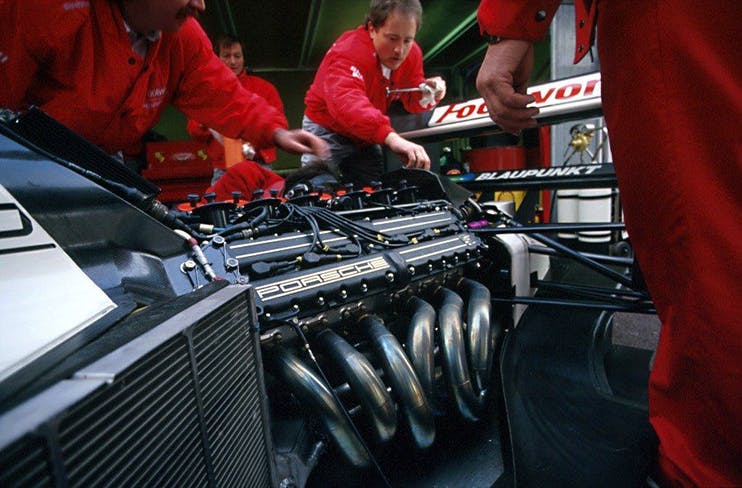
The Porsche 3512 engine during the 1991 Monaco GP – photo credits: unknown
At the season-opener at Phoenix, Caffi failed to qualify while Alboreto qualified for 25th place, but had to retire with a gearbox failure right at the start of the race and as if it couldn't be bad enough, the issues repeated at the Brazilian GP, where both drivers failed to qualify on the last race where Footwork and Porsche expected to use the old FA11C, as they already had their brand new FA12 ready for the round three at the 1991 F1 season, the San Marino Grand Prix. Both Caffi and Alboreto had their FA12 ready for the weekend, but Alboreto's enjoyment didn't last that long, as he crashed at the now infamous Tamburello corner. The driver was ok, but the FA12 wasn't, so the team had to go back to the FA11C for him, while his teammate still had the newer project… either way, none of them managed to qualify for the race.
Moving to Monaco, the team once again had both of their drivers on the FA12, but once again failed to get good results as Alboreto managed to start in 25th place but had to retire due to a problem with his engine while Caffi couldn't qualify at all after crashing and splitting his car in half. Things weren't going well for Footwork and much less for Porsche, as the British team was already determined to go back to their old and reliable Ford V8 engines, but they still had to go with Porsche for the next two rounds, Canada and Mexico and in the meantime, Footwork still had to go after Steffan Johansson to replace Alex Caffi, who was recovering from his crash at Monaco.
With the replacement driver on Footwork's car number 10, the circus went to Canada and while Benetton was enjoying what turned to be Nelson Piquet's last F1 win (taking advantage of Mansell's clumsiness over what would be his last lap to victory), the environment at the other end of the grid wasn't that happy. Johansson qualified to start in 25th place, but after 48 laps his throttle stopped working, the same issue that ended Alboreto's race earlier than expected, during the second. Now, Porsche had only the Mexican Grand Prix to do before being replaced by Ford and once again, bad results with Johanson failing to qualify and Alberto qualifying to start the race as P26 before… once again having to retire due to another engine failure.
And just like that, the deal that was settled to last four years was ended after six races, with at least one of their cars failing to qualify on every race apart from Canada, where both qualified, but retired under two and forty-eight laps respectively. A disaster for Footwork, who went back to their Ford engines before changing to Mugen-Honda V10 engines for 1992 and 1993 and a bigger disaster for Porche, an iconic brand that won Le Mans in the past and had some of the best sports cars on the market at the time, but still failed to do a good engine for a team that wasn't one of the most competitive teams already, used to constantly fighting for single points during a whole season, back when only the first six finishers would score points. That was a stain on the brand that Porsche couldn't leave behind, and the problem was even worse as time passed by.
Taking notes on their issues during their short 1991 season, Porsche was developing a brand new 5.5-litre V10 engine for the following year but as the 1992 season came, no one showed interest in Porsche's project. Footwork had just terminated their deal with Porsche a few days before the 1991 Japanese Grand Prix and the other teams already had their trustworthy engine suppliers to rely on, leaving Porsche aside with an unused engine that couldn't be used in 1995 either, as the rules then stated the maximum displacement allowed was 3.0-litre engines, so Porsche's 5.5 was officially out of F1.
The Footwork Porsche. A headache, but the start of what would become a great car. (photo credits: unknown)
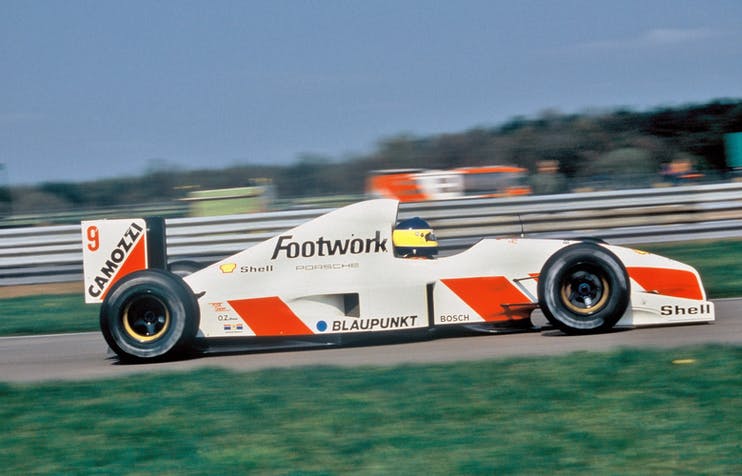
The Footwork Porsche. A headache, but the start of what would become a great car. (photo credits: unknown)
Porsche's home ground
While Porsche had nightmares with their latest F1 experience, Le Mans was as always their home ground, where (at the time of the V12 project with Footwork) Porsche had twelve wins, with seven wins in a row between 1981 and 1987 and went back to win again in 1994, 1996, 1997 and 1998, being the last one with the 911 GT1 with the trio Laurent Aïello, Allan McNish and Stéphane Ortelli. The 911 GT1, which was a full racecar project that had basically no visible connections with the 911 made for the roads (apart from its name and its taillights) made a debut at the 1996 24 Hours of Le Mans, making part of a total of 135 races on the GT1 Class and winning a total of 47 races between 1996 and 1998 before the retirement of the GT1 class, replaced by the LMP class by the FIA as the championship was going through a restructuring.
The Porsche GT1-98 at the 1998 24 Hours of Le Mans – Photo Credits: Goodwood.com

The Porsche GT1-98 at the 1998 24 Hours of Le Mans – Photo Credits: Goodwood.com
Porsche had a mighty win at Le Mans in 1998, but the opposition wasn't easy to take over. Mercedes was pointing to be the favourite for the win with the CLK LM while Toyota was also a hard opponent to beat with their GT-One, but with just a couple of hours from the start, BMW saw their only car retiring and two hours later, Mercedes also saw themselves out of the competition with both of their CLR GTR retiring due to mechanical issues. Now it was a battle between Porsche and Toyota, and it was a good battle until the moment when Toyota also had to retire, leaving Porsche alone to take the win with a one-two finish, having the 911 GT1 #26 from the trio Laurent Aïello, Allan McNish and Stéphan Ortelli finishing ahead of the 991 GT1 #25 from Jörg Müller, Uwe Alzen and Bob Wollek, while Nissan, their closest rivals at that point just finished the race a couple of laps later.
Porsche had a great car, but so did the other big brands, so they felt that they needed to step up for the following year and beyond that, the whole championship was going through a restructuring phase. The FIA and the ACO had their views for the future of the series in the medium and long term and with that, the rules over the race classes were changing for 1999 as both the LM WSC and the GT1 class were about to be replaced by the LMP series, so it was clear for Porsche that a new car was needed for the following season as they couldn't race with the 911 GT1 and neither the older TWR-Porsche WSC-95 and the Germans couldn't appear with a weak car on their major showroom to the world. The 911 GT1 was officially retired and Porsche had the names to lead the new project, Norman Singer and Wiet Huidekoper.
Singer came from a long history with Porsche as their race engineer, working directly at basically almost every Porsche that won at Le Mans and at his side there was Huidekoper, a Dutch engineer who had it start at Porsche with the 911 GT1 project during the mid-'90s alongside Singer himself, who brought Huidekoper to Porsche after seeing his work with Dauer Racing on their Dauer 962 project, a road version of the Porsche 962 racecar. Beyond that, Singer was impressed with his work with Lola on the T92/10 and Dallara with the Dallara-Chrysler LMP, so Singer had a good name to take the Porsche 9R3 project alongside him, having only one requirement: they had to keep the 3.2-litre Flat-six engine previously used on their GT1 car.
The 9R3 project was finished at the end of 1998 and quickly, the engineers saw a problem. Their only requirement, the flat-six engine wouldn't fit because it was too heavy and underpowered. They couldn't race with a 230kg turbocharged engine against the average 160 kg from the engines used by the other teams at that time, mainly Mercedes with their NA 5.7 V8 from the CLK LM and the upcoming CLR, their major opponent at Le Mans in 1999. Not to mention other problems like structural integrity and the fact that Porsche was relying on forced induction with their twin-turbo engine while the other teams were mainly working on naturally aspirated engines.
Now, Porsche had a car with an engine that was both outdated and heavier than their rivals due to the forced induction and they didn't had much time to work on something else, so the project was cancelled and the “93R” project was stopped, apparently without hopes of making part of a race. But that was when Huidekoper was surprisingly called by Porsche's motorsport director engineer, Herbert Ampferer, as they had an alternative for their new Le Mans Prototype. Huidekoper was introduced to the V10 engine project that was originally conceived for the Footwork F1 team and was stored since then. As Footwork gave up on the Porsche partnership during the 1991 season and went back to the Ford V8 engines before going with Mugen-Honda in 1992, Porsche had a nearly finished engine and nothing to do with it for a while apart from using it as a training exercise for their team of engineers before being left forgotten, but now Porsche had a nearly finished 3.5-litre V10 engine to work with and the (now called) LMP2000 project was now back on track.
As it was originally meant to be a mid-'90s F1 car, the engine that Porsche had was compact and lighter than their flat-six, which pleased Huidekoper, but that does not mean that changes were not necessary for it to be a proper Le Mans engine. Not only the cubic capacity raised to 5.0 and 5.5-litre alternatives but also, the pneumatic valve springs were removed as they would be redundant and unnecessary when they would already have air restrictors, mandatory under the LMP regulations. The chassis was also improved and the project was on a good path when Wendelin Wiedeking (Porsche's chairman at the time) was watching a test with the LMP2000 at the Weissach test track alongside Ampferer when the question came:
“How many wins do we have at Le Mans?”
“sixteen”, answered Ampferer
“And who's next?”
“Ferrari, with eight”, answered Ampferer
At that point the conversation went on and the duo agreed that Porsche had a pretty good number on race wins at La Sarthe and a safe record, so the brand wasn't on such a need to take Le Mans once again to promote Porsche as a brand and for a second time, the executives pulled out the plugs on the LMP2000 project when they already had a car and an engine developed, and now there wouldn't be another comeback. After giving up on the race in 1999, Porsche wasn't coming back to Le Mans in 2000 anymore and their reasons were reasonable. Audi was coming to Le Mans in 2000 for the LMP1 class and the Volkswagen group wasn't interested in an inside battle between their brands and besides, they already had spent a ton of money on that V10 project and still had an SUV to make, the Cayenne as mentioned earlier, so Porsche and Volkswagen chose to spend their money on the new SUV project than on another car to do Endurance racing.
From that point onwards, Porsche never really talked about the LMP2000, even though the public was aware of Porsche's return to Le Mans in 2000, the car with which Porsche would run was kept on a secret, apart from a few leaked pictures taken during a quick two-day test run at Porsche's test track in Leipzig, Germany weeks before being aborted. Now the LMP2000 was stored under covers at a Porsche facility near Stuttgart and wouldn't be seen by the public for the next eighteen years until the 2018 Goodwood Festival of Speed, when Porsche was being celebrated for its 70 years of history as a car company.
The LMP2000 alongside the 1998 911 GT1 at the 2018 Goodwood Festival of Speed (Photo credits: Goodwood Festival of Speed)
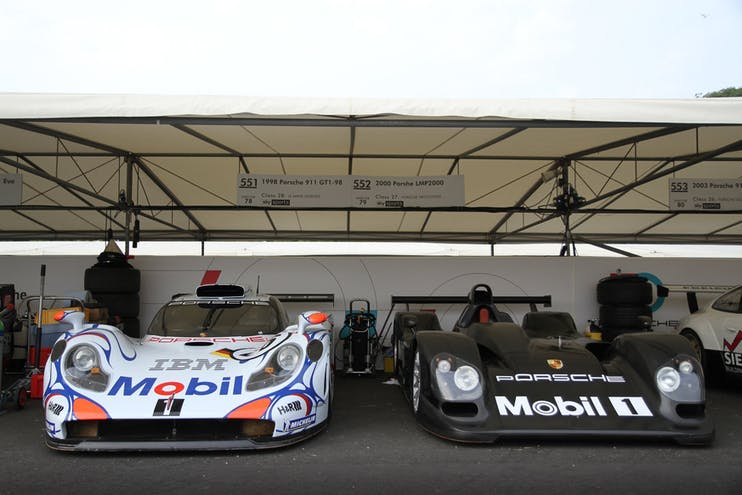
The LMP2000 alongside the 1998 911 GT1 at the 2018 Goodwood Festival of Speed (Photo credits: Goodwood Festival of Speed)
The Carrera GT
Photo credits: Porsche
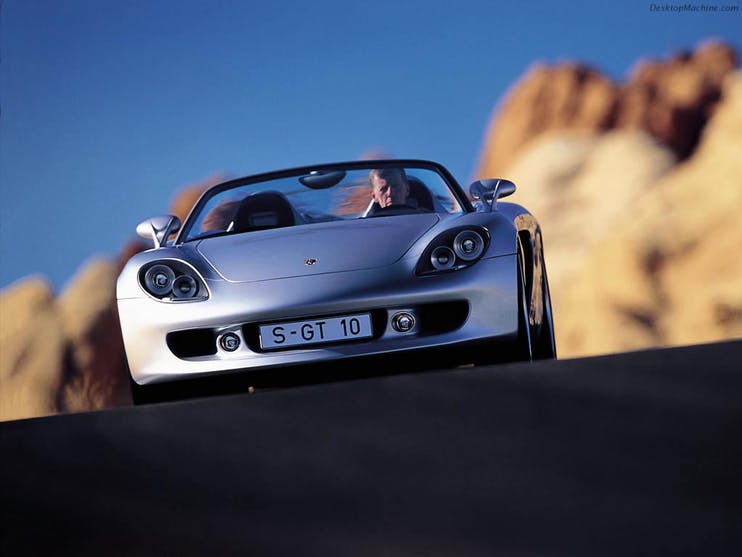
Photo credits: Porsche
Decided to turn some heads at the 2000 Paris Motor Show, Porsche called their racing division to oversee the project from day one and Ampferer called for something new and Le Mans inspired instead of bringing some tuned-up flat-six project over the chassis of a 911 and to help on that direction, he brings the 5.5 litre V10 project to have their car-mounted all over it and the technical result couldn't be better, a carbon-fibre monocoque with push-rod suspension and the V10 engine mounted into mid-rear position. To cover it all, a beautifully shaped body with panels made out of carbon fibre (obviously) designed to look like something totally new while being at the same time, unquestionably a Porsche. It worked, the Carrera GT was pretty well received during the exhibition and Porsche was decided to take it ahead into production.
To make the production model, Porsche increased the cubic capacity from 5.5 into a 5.7 litre and developed changes into the engine, so it would fit into global regulations over emissions and noise, finishing it to be shown at the 2003 Genova Motor Show as a final product, ready to be sold to the public and driven by journalists from all over the world. Car and Driver stated on the title of their review for the June 2004 issue that the Carrera GT “defines magnificent”, even saying that Ferdinand Porsche himself would be proud of it, a statement I do have to agree with.
Walter Röhl took it for a fast lap through the Nürburgring Nordschleife and that combination resulted in a brand new record on a time of 07:28.71, being for six years the fastest Porsche through the green hell, SIX YEARS! And it wouldn't be beaten until a certain Italian based Argentinian businessman called “Horacio Pagani” brought his own car, a Zonda F Clubsport and a professional racing driver from Germany called Marc Basseng to drive it. Anyway, Mr Pagani was certainly impressed by the work made by Porsche as he would later buy his own Carrera GT.
Photo credits: unknown
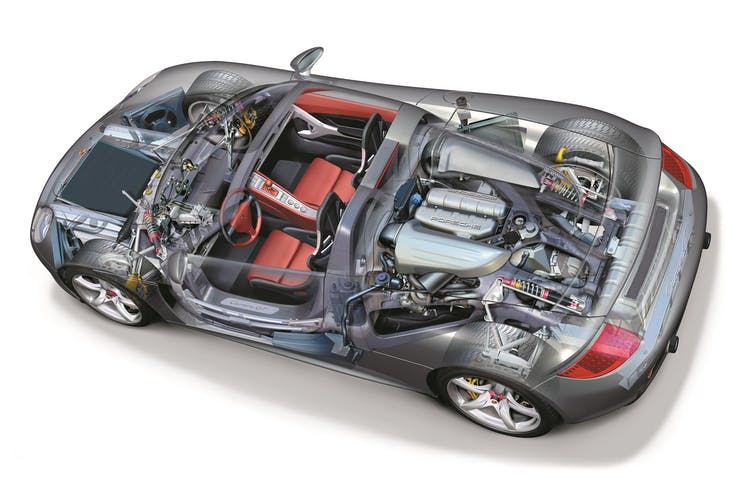
Photo credits: unknown
the legacy left and my personal view.
photo credits: myself

photo credits: myself
Even with the idea of the article in mind and a few paragraphs written, I didn't knew right away what line to take on this article, so I took a halfway stop to search more and think about it and to make this article happen, I went over every content I could find about it. Articles, videos and others and even though every single one of them has a different approach and even a different context, being some of them about the Carrera GT as a brand new car back in 2003 or 2004 and others about it as the icon it became as the years went by since the end of the production. And one thing stands in common in both lines, the statement of it as an ultimate driver's machine.
Walter Rohl was the mastermind behind the idea of keeping it on a manual transmission, instead of giving it paddle shifts, all in favour of the best experience behind the steering wheel you could have as a driver. It's a mean car that doesn't tolerate foolishness behind the steering wheel and the fact that from the 1270 cars made, a dozen of them were slightly or totally damaged on crashes not that much later than when they first left the dealership proves that.
There's no way to not see the Carrera GT as an icon, a character that defined a generation and certainly, it is one of the coolest cars I've ever seen in person… and I'm lucky enough to say that I have seen two of them in person and the first of them belonged at the time to no one else than the three-times F1 world champion Nelson Piquet. I managed to see it at a Porsche event at a dealership a few years ago. I heard about that event late on the night before it and, hopeful about the possibility of seeing such a car in person for the first time, I took my own Carrera GT as well… the one I can afford, obviously. And as you can see through the cover photo of this article, my expectation was fulfilled.
As I've had said in the prelude for my article, I'm a diecast collector and certainly, the experience of seeing one of my all-time favourite cars in person made an impact when I was out to buy something for my collection. My latest two Carrera GT came after the experience of seeing the real deal, with a 1/24 model arriving first to my collection back in 2018, not that long after seeing the black Carrera GT at that meeting and the second one (the inspiration for this article) came a few months ago and once again, just a few months after seeing the real thing.
It's one of those cars that can't pass without letting you astonished. It's like being a fan of a celebrity and having the chance to meet that person and see that everything you heard about that character is true. And in my case, that character ain't no movie star or musician but a car and for sure that Speed Yellow scaled model won't be the last Carrera GT on my diecast collection.
Keyword: A tiny Porsche, a lot of history.
